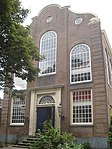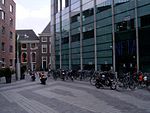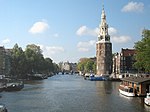Uilenburgergracht
AC with 0 elementsCanals in Amsterdam

The Uilenburgergracht is a secondary canal in Amsterdam, the Netherlands. It is located east of the Amsterdam-Centrum district, in the Lastage neighborhood. The Uilenburgergracht defines the southeastern border of Uilenburg Island. It is connected to Houtkopersburgwal and Rapenburgwal, which delimit the southwest and the northeast borders of the island. They lead to the Oudeschans canal along the northwest of the island. The Uilenburgergracht was dug in 1593. In the nineteenth century, the newly created islands of Uilenburg, Valkenburg and Marken were the poorest neighborhoods of the Jewish quarter.
Excerpt from the Wikipedia article Uilenburgergracht (License: CC BY-SA 3.0, Authors, Images).Uilenburgergracht
Valkenburgerstraat, Amsterdam Centrum
Geographical coordinates (GPS) Address Nearby Places Show on map
Geographical coordinates (GPS)
| Latitude | Longitude |
|---|---|
| N 52.370097 ° | E 4.905893 ° |
Address
Valkenburgerstraat 140K
1011 NA Amsterdam, Centrum
North Holland, Netherlands
Open on Google Maps









